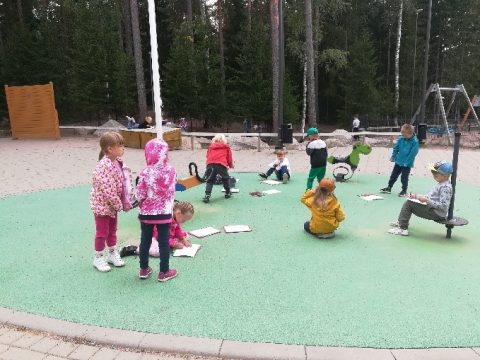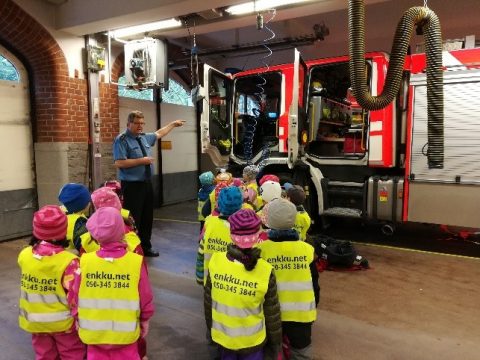Child’s space: Let’s have a learning environment makeover!
Some of you might share with me that when you have been in the teaching profession for long enough, it is a bit of a challenge to turn off ‘professional mode’ when away from the workplace. Every now and then in my free time, I catch myself observing children’s play, their interaction and behavioural responses to various emotional states. Honestly speaking, I find it curious to see how children make sense of the world around, what strategies they use to engage with an environment and people, what personalities they are beyond the bounds of an organized ECEC service, a day-care.
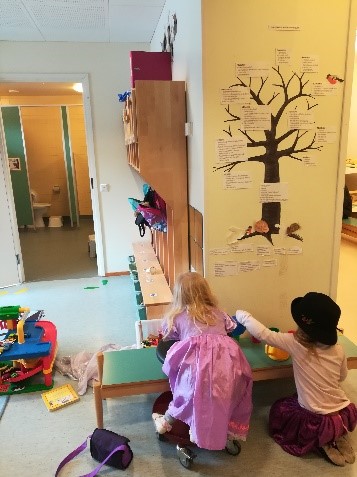 The other day I saw a child leaping like a frog down the aisle in a grocery store. Being fully immersed in her make-believe play, she was making ‘ribbit’ sounds and occasional movements with her head and eyes. So natural in her ways, she was communicating: “I can do, play, move, express myself at any time and in any environment.”
The other day I saw a child leaping like a frog down the aisle in a grocery store. Being fully immersed in her make-believe play, she was making ‘ribbit’ sounds and occasional movements with her head and eyes. So natural in her ways, she was communicating: “I can do, play, move, express myself at any time and in any environment.”Indeed, the immediate physical environment is a child’s space. It is something that matters and provides the context for the child’s ways of being, knowledge construction and skill practice. It is also one of the three dimensions of early childhood environment alongside the social and psychological ones (Core Curriculum for Early Childhood Education and Care, Finland, 2016), which altogether contribute to the child’s well-being, development and learning in a complex way.
What makes the space and available physical environment a quality learning environment? The way we think of and understand the physical environment and its educational potential, and implement related work practices, derives from the conception of learning we adhere to.
The importance of function, structure and arrangement of space has been appreciated and scrupulously addressed by various educational schools based on child-centered philosophy. It has been advocated that early childhood spaces need to provide for goal-oriented and purposeful engagement, interaction, inquiry, experimentation, movement, expression, etc. Indeed, a well-thought, pedagogically justified and intentionally designed by adults environment is conducive to development and learning. Classroom design, toys, games, supplies and equipment which are age-appropriate and cater to the abilities of each child are crucial for advancing various skills and knowledge.
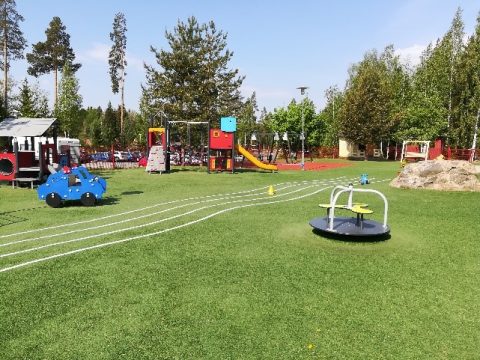 A good quality physical environment is both a ‘container’ and ‘content’. It is a medium in which and through interaction with which the child makes connections, interpretations and meanings. Child’s continuous mobility of thought and action suggests that their environment should allow for flexibility and modification. Consisting of multiple elements, objects and materials, it should be active and evolve along with children’s needs and interests, functionality, project themes, etc.
A good quality physical environment is both a ‘container’ and ‘content’. It is a medium in which and through interaction with which the child makes connections, interpretations and meanings. Child’s continuous mobility of thought and action suggests that their environment should allow for flexibility and modification. Consisting of multiple elements, objects and materials, it should be active and evolve along with children’s needs and interests, functionality, project themes, etc.At best, the environment should invite children to create their own content in it! I remember how one of the participants in our ECEC Tours drew her attention to a play unfolding among 2-3-year-old children with only play silks in their hands in an almost empty room. She was amazed how “less is more” can be so meaningful and educative. Such an arrangement was a conscious choice of the educators aiming to enhance children’s imagination, creativity and interaction skills. The environment does not need to be abundant, or ever complete or brought to perfection – it is not an end in itself.
The idea of a flexible environment does not apply to classroom arrangements only. We can discover or create a learning environment just anywhere around. A good physical environment makes it possible to blend various learning areas and practise several skills simultaneously.
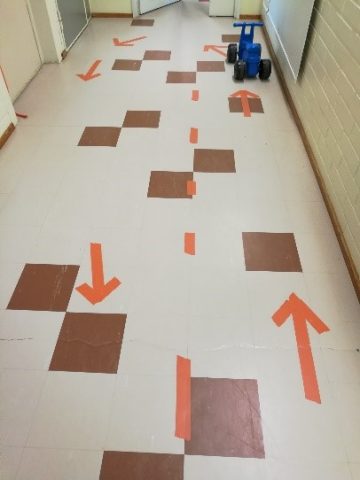 We can assign a new meaning to a transition area by setting up a sensory path on the floor. We can also organize a story-telling activity in a sports hall or other available space by making a collective story first, then taking out sports equipment and thinking how to tell the story with movements and available equipment (e.g., hula hoops, balls, climbing frame, bean bags, tiles, etc.). By recognizing multiple opportunities for outdoor spaces, we can play various bingo games or design a pirates QR code track or try a compound words hunt in the day-care yard or a nearby park or forest, library and other local infrastructure. Seeing familiar spaces in such ways that contribute to pedagogical action is something worthwhile teaching to ourselves and getting ideas from LessonApp.
We can assign a new meaning to a transition area by setting up a sensory path on the floor. We can also organize a story-telling activity in a sports hall or other available space by making a collective story first, then taking out sports equipment and thinking how to tell the story with movements and available equipment (e.g., hula hoops, balls, climbing frame, bean bags, tiles, etc.). By recognizing multiple opportunities for outdoor spaces, we can play various bingo games or design a pirates QR code track or try a compound words hunt in the day-care yard or a nearby park or forest, library and other local infrastructure. Seeing familiar spaces in such ways that contribute to pedagogical action is something worthwhile teaching to ourselves and getting ideas from LessonApp.When making choices about an environment, adults assess what can be useful for children. However, we should also ask children and come to know what kind of an environment feels nice to them, what is the best in a day-care, what opportunities different spaces provide in the eyes of children, how to make children’s presence and traces visible in a day-care life. Children are capable of giving us clues and wonderful ideas that we would pass by or not register otherwise. Child’s participation and influence, being central values in the Finnish Core Curriculum for ECEC, are translated into practice only when a child is invited to co-discuss, co-plan, co-construct and co-assess their learning environment together with an adult.
ECEC Specialist
